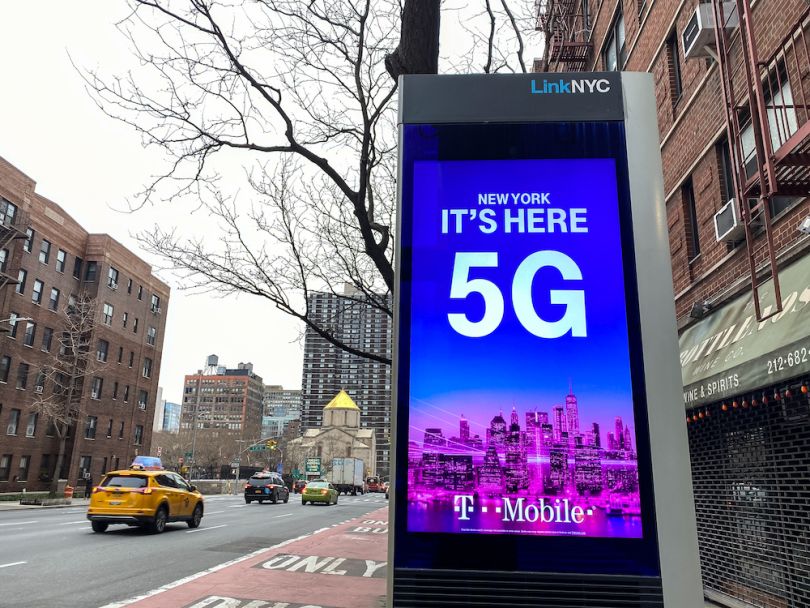Verizon, AT&T, T-Mobile and Sprint have spent the past few years talking up the capabilities of 5G, the next-generation cellular network that, at its maximum speed, is up to 100 times faster than today’s 4G networks. Yes, these speeds will make it possible to download HD movies in minutes and make laggy video games a thing of the past, but 5G’s impact will extend far beyond the entertainment and gaming industries.
In the future, autonomous cars will share data with each other and city infrastructure, construction workers could don VR headsets to operate heavy machinery from miles away, and IoT devices will populate smart cities. The news industry could also undergo its own 5G revolution as improved connectivity, faster download speeds and lower latency enable seamless VR and AR experiences on mobile phones.
According to Rathi Murthy, CTO of Verizon Media — the parent company of TechCrunch, Engadget, HuffPost and Yahoo News, among other media properties — the impact of the new technology will spur media companies to produce more immersive content.
“Media will be one of the first industries to benefit from the [5G] technology,” said Murthy. “The future of media is rooted in immersive experiences that bring the news to life.”

Wait, What Is 5G Again?
Here’s the condensed version: Wireless companies are increasing network bandwidth and reducing latency by tapping into higher radio frequencies that previously went unused. These higher-frequency signals can’t travel very far without losing strength, so wireless companies have set up small cell nodes, about the size of a pizza box, to relay signals in urban areas.
City opposition to the use of rooftops, streetlights and telephone poles as way stations for wireless signals — along with the cost associated with installing so many small cell access nodes — have slowed the rollout of truly high-speed 5G networks. Although 5G coverage is currently available in most major American cities, some estimate that full consumer adoption won’t occur until 2025.
Your Primer On 5G Bandwidth And Latency
- Bandwidth refers to how much data can be transferred over a fixed period of time and is typically used when talking about download and upload speeds. Bandwidth is currently measured in Mbps, or megabits per second.
- Latency is the amount of time it takes data to travel from one device to another, or from a device to a server. It’s most commonly measured in ms, or milliseconds. High latency can slow video streams and lead to lag in video games.
- Existing 4G networks have a max speed of 400 Mbps and latency as low as 50 ms.
- According to Samsung, 5G will offer speeds as fast as 20 Gbps (gigabits per second) and latency of around 1 ms once it is fully rolled out.
Though many Americans think otherwise, there are actually very few 5G smartphones and laptops on the market. Apple hasn’t released a 5G iPhone and very few Android devices are compatible with the new network. Samsung’s new line of phones, the Galaxy S20, is compatible with the 5G networks of all four major carriers in the United States, but they don’t come cheap: The least expensive model is $999.
Currently, the Lenovo Yoga 5G is the only laptop that offers 5G connectivity. The Yoga can download up to 4 GB of data per second and comes equipped with a whopping nine antennas to ensure it can connect to both existing cellular networks and those under construction. In a press release announcing the new Yoga, Johnson Jia, an SVP and General Manager at Lenovo, expressed the company’s bullishness on 5G.
“We see 5G as an essential and exciting part of intelligent transformation,” Jia said in a statement. “Bringing this unprecedented access and speed into our PCs helps us empower our customers and lead the way to a more connected, more seamless and more powerful future.”
Although consumer options remain limited for now, more 5G-capable devices are on the way. But the media industry isn’t waiting until every person has a new smartphone in their pocket to ramp up work with immersive content.

Immersive Content Today: Just Scratching The Surface
In addition to the news organizations in its portfolio, Verizon Media also owns RYOT, an immersive media studio based in Los Angeles. Murthy said Verizon Media’s 5G studio is equipped with technology for motion and volumetric capture, the latter of which is used to generate full 3D images of individuals in VR. The studio also features a 5G node, which enables high-speed rendering of humans and objects in 3D.
The Road To 5G, According To Lifewire
- 1G: The first cellular networks debut in the 1980s and only support voice calls.
- 2G: Wireless companies make the switch from digital to analog networks in the early 1990s. Cell phones can send text and multimedia messages for the first time.
- 3G: Mobile web browsing emerges with the launch of 3G networks in 1998.
- 4G: In 2008 the full potential of the iPhone — which launched in 2007 — and other smartphones are unlocked with the arrival of 4G, which supports data-intensive activities like streaming HD video.
In April 2019, Verizon Media launched the Yahoo News XR Partner program, which gave USA Today, Reuters, The Associated Press, Time and NowThis access to RYOT’s 5G production studio in exchange for publishing XR content on Yahoo News.
One of the first pieces of content to come out of the XR partner program commemorated the one-year anniversary of the Camp Fire, a devastating wildfire that tore through Northern California in late 2018. Yahoo News released an AR experience on its mobile app that takes users “inside” the home of Bert and Jo Lynne Clement. The experience recreates the skeleton of the house the Clements are rebuilding and features audio interviews and photos of their home from before and after the fire.
“We’re working together to produce content that humanizes current events and generates deeper empathy toward society’s biggest stories,” Murthy said.
The partnership also recently produced “The March,” an exhibit at Chicago’s DuSable Museum of African American History created by Time that lets museumgoers experience Dr. Martin Luther King Jr.’s “I Have a Dream” speech in VR. Visitors don headsets and march down Constitution Avenue in Washington, D.C. before joining hundreds of thousands at the National Mall for Dr. King’s history-making speech.
Of course, Verizon Media doesn’t have a monopoly on immersive content. The New York Times released a VR app in November 2015 and its news app has supported AR since early 2018. The BBC’s VR Hub, which featured news, comedy and animated content, launched in November of 2017 but was only given two years of funding and shut down late last year. USA Today’s work with VR pre-dates its partnership with Verizon Media by three years.
Although immersive content has existed since wireless companies were touting the benefits of 4G LTE, Murthy said that news organizations have only just begun to scratch the surface of what’s possible.
“This is just the beginning with 5G, and we’re so excited at what it will bring to the future of storytelling,” said Murthy.







